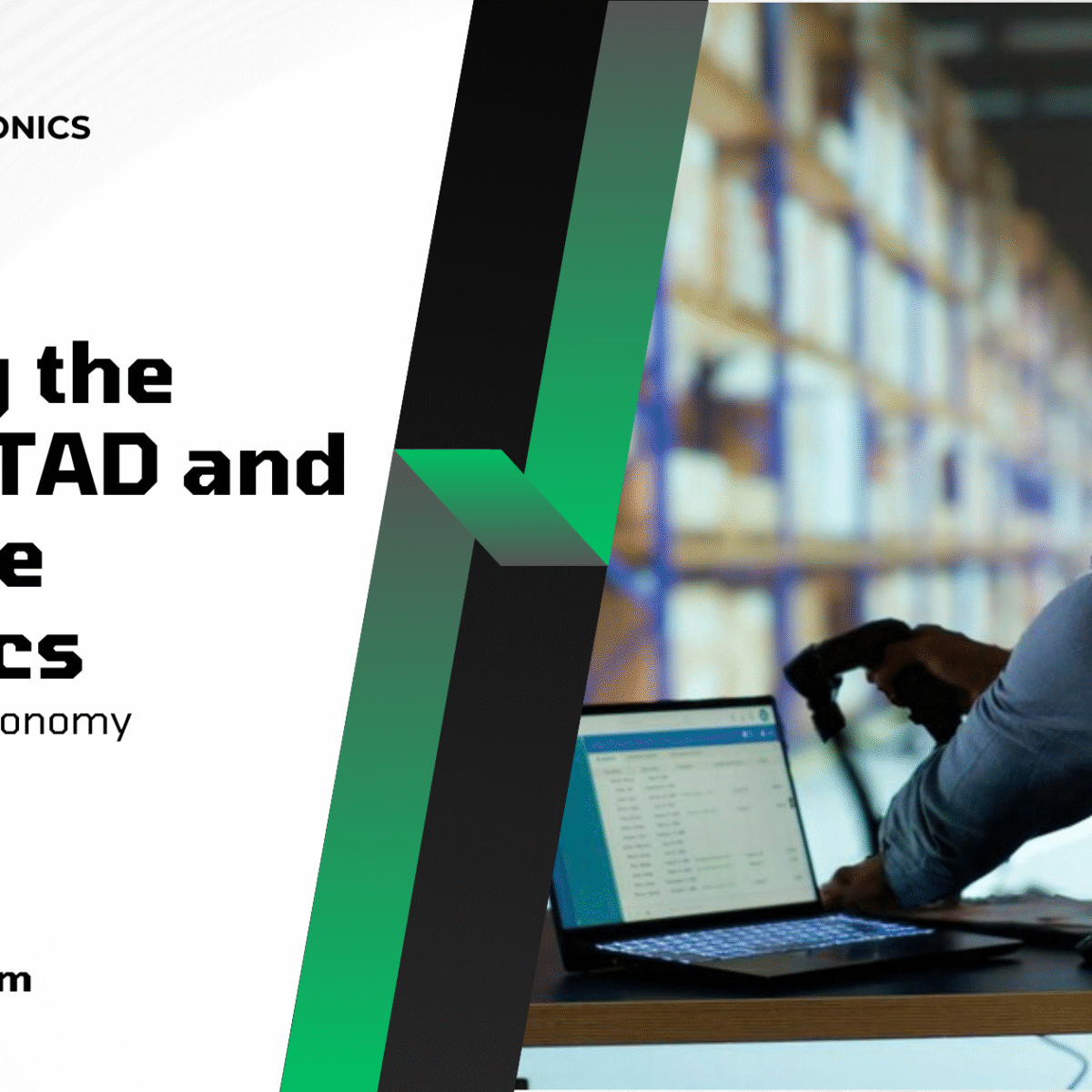Introduction
In today’s connected, resource-constrained world, businesses are rethinking what happens at the end of a product’s lifecycle. From smartphones to servers, every piece of technology eventually reaches retirement — but that doesn’t mean it’s the end of its value.
Through IT Asset Disposition (ITAD) and reverse logistics, organizations can transform end-of-life IT assets from waste into opportunity, fueling a circular economy that reduces environmental impact, recovers value, and safeguards data integrity.
At its core, this shift represents a new mindset:
“Closing the loop” means keeping materials, data, and value in circulation — securely, responsibly, and sustainably.
This post explores how combining ITAD and reverse logistics creates smarter, greener technology lifecycle management — and how organizations can implement these practices to meet compliance, ESG, and cost-reduction goals simultaneously.
Understanding Reverse Logistics in the IT Lifecycle
Reverse logistics refers to the process of moving goods from their typical final destination backward through the supply chain for the purpose of reuse, refurbishment, recycling, or proper disposal.
In IT operations, this includes:
- Collecting retired or returned devices
- Transporting assets from end users back to secure processing facilities
- Evaluating equipment for reuse, resale, or recycling
- Ensuring compliant data destruction before redistribution
Whereas traditional logistics focuses on delivering new equipment, reverse logistics focuses on responsibly retrieving, securing, and reintroducing assets into the supply chain — completing the loop.
According to the Reverse Logistics Association (RLA), efficient reverse logistics programs can recover up to 60% of a product’s residual value, while significantly reducing landfill waste and carbon output.
ITAD: The Secure Foundation of Reverse Logistics
While reverse logistics emphasizes the physical flow of assets, IT Asset Disposition (ITAD) ensures the secure, compliant, and sustainable handling of data-bearing devices at every step.
Certified ITAD providers integrate tightly with reverse logistics systems to provide:
- Data Sanitization: Using NIST SP 800-88 Rev. 1 standards to securely erase or destroy data.
- Chain-of-Custody Tracking: Complete traceability from pickup through final processing.
- Regulatory Compliance: Meeting HIPAA, GLBA, FERPA, DFARS, and CMMC requirements, depending on industry.
- Sustainable Recycling: Certified under R2v3 or e-Stewards standards for responsible downstream recycling.
Together, ITAD and reverse logistics form a closed-loop process where devices are securely retired, refurbished, or recycled — without exposing sensitive information or harming the environment.
Why Closing the Loop Matters: Benefits Across the Board
1. Data Security and Risk Mitigation
Every retired device — from a corporate laptop to a network switch — represents a potential data breach if not handled properly.
By integrating ITAD into reverse logistics, businesses ensure that data is destroyed before reuse, resale, or recycling.
This is especially critical for compliance with data privacy laws like GDPR and CCPA.
2. Sustainability and ESG Impact
E-waste is the world’s fastest-growing waste stream, with over 62 million metric tons generated in 2022 according to the United Nations Global E-Waste Monitor.
Closing the loop keeps valuable materials — copper, gold, rare earth metals — in circulation while preventing hazardous materials from entering landfills.
Certified ITAD and reverse logistics programs directly support corporate ESG and sustainability reporting, providing measurable data on diversion and carbon savings.
3. Financial Value Recovery
Through resale and reuse, businesses can recover 10–30% of original hardware value. This recaptured value helps offset technology refresh costs and supports reinvestment in modernization initiatives.
4. Brand Reputation and Stakeholder Trust
Consumers, investors, and regulators increasingly expect companies to demonstrate responsible product lifecycle management. A closed-loop ITAD program showcases environmental leadership and ethical business practices.
The Circular Economy in Action
The circular economy is built around three principles defined by the Ellen MacArthur Foundation:
- Eliminate waste and pollution
- Circulate products and materials
- Regenerate natural systems
When applied to IT, this means designing and managing technology lifecycles to maximize reuse and minimize waste.
In practice:
- Reverse logistics retrieves and routes assets efficiently.
- ITAD ensures secure data destruction and responsible material recovery.
- Refurbishment and resale extend device lifespans.
- Recycling and recovery extract materials for new manufacturing.
Together, these steps create a continuous loop of value — the essence of sustainable IT operations.
Implementing a Closed-Loop ITAD & Reverse Logistics Program
1. Conduct an Asset Lifecycle Assessment
Start by auditing all technology assets across locations. Identify:
- Asset types and quantities
- Data sensitivity levels
- Current disposal or reuse practices
- Logistics and storage constraints
This baseline informs your reverse logistics strategy and sustainability targets.
2. Partner with a Certified ITAD Provider
Select a partner with certifications including:
- R2v3 or e-Stewards (responsible recycling)
- NAID AAA (data destruction)
- ISO 14001 / 45001 (environmental and safety management)
Certified vendors ensure secure chain-of-custody, verified destruction, and transparent downstream recycling.
3. Design a Reverse Logistics Workflow
Integrate ITAD with your existing logistics network. A strong reverse logistics plan should include:
- Centralized pickup scheduling
- GPS-tracked transport
- Secure temporary storage points
- Serialized tracking and reporting systems
Automation tools can help manage returns, refurbishments, and audits seamlessly.
4. Prioritize Reuse and Refurbishment
Whenever possible, prioritize asset reuse within your organization or donate refurbished devices to schools or nonprofits.
Refurbishment reduces manufacturing demand and extends the lifecycle of valuable components.
5. Quantify and Report Outcomes
Track metrics such as:
- E-Waste Diversion Rate (% reused or recycled)
- CO₂ Reduction (kg saved)
- Total Asset Value Recovered ($)
- Data Destruction Verification (%)
These figures support annual ESG reporting and demonstrate the impact of your sustainability initiatives.
The Sustainability Metrics that Matter
To evaluate the success of your closed-loop ITAD and reverse logistics program, measure the following KPIs:
| Metric | Description | Impact |
|---|---|---|
| E-Waste Diversion Rate | Percentage of devices diverted from landfill | Reduces environmental footprint |
| Refurbishment Rate | Portion of devices successfully reused or resold | Extends product life |
| Carbon Emissions Saved | CO₂ avoided through reuse/recycling | Supports ESG goals |
| Material Recovery Rate | Volume of metals and components reclaimed | Drives circular resource use |
| Data Destruction Compliance | % of devices verified under NIST 800-88 | Ensures information security |
IER provides transparent, third-party verified reporting so clients can confidently include sustainability metrics in corporate or public filings.
Case Example: Closing the Loop in Corporate IT
A national financial services firm partnered with IER ITAD Electronics Recycling to modernize its end-of-life technology handling. Over the course of a year:
- 7,800 retired assets were securely collected via a reverse logistics program.
- All devices were processed under NIST 800-88 sanitization standards.
- 82% of equipment was refurbished and resold domestically.
- 17% was responsibly recycled with full R2v3 documentation.
- Over 124 metric tons of CO₂ emissions were avoided.
The result: a fully documented, auditable, and sustainable closed-loop process that combined data security, financial return, and measurable ESG progress.
FAQs: ITAD, Reverse Logistics, and the Circular Economy
Q1: What’s the difference between ITAD and reverse logistics?
A: Reverse logistics focuses on the physical transport and processing of retired equipment, while ITAD focuses on the secure data destruction, compliance, and sustainability aspects. Together, they form a complete lifecycle loop.
Q2: Can reverse logistics apply to leased IT assets?
A: Yes. Certified ITAD vendors manage end-of-lease returns, ensuring assets are securely wiped and refurbished before being sent back to OEMs or lessors.
Q3: How does this tie into ESG reporting?
A: ITAD and reverse logistics programs provide quantifiable data on material reuse, emissions reductions, and ethical recycling — key metrics for ESG frameworks such as GRI or SASB.
Q4: What happens to non-functional devices?
A: Non-repairable assets are processed under certified recycling standards (R2v3/e-Stewards) to recover materials safely.
Q5: Can small and mid-sized businesses benefit from these programs?
A: Absolutely. Scalable reverse logistics and ITAD solutions are now available for SMBs, offering cost savings and sustainability benefits previously limited to large enterprises.
Conclusion
Closing the loop isn’t just a sustainability initiative — it’s a smarter, more secure way to manage technology lifecycles.
By integrating reverse logistics and ITAD, organizations protect sensitive data, reduce environmental impact, and recover financial value — all while contributing to the global circular economy.
At IER ITAD Electronics Recycling, we help organizations design and implement end-to-end solutions that make this vision a reality:
secure, compliant, transparent, and sustainable.
➡️ Close your technology loop with IER. Contact us today to learn how reverse logistics and ITAD can power your organization’s circular economy strategy.





